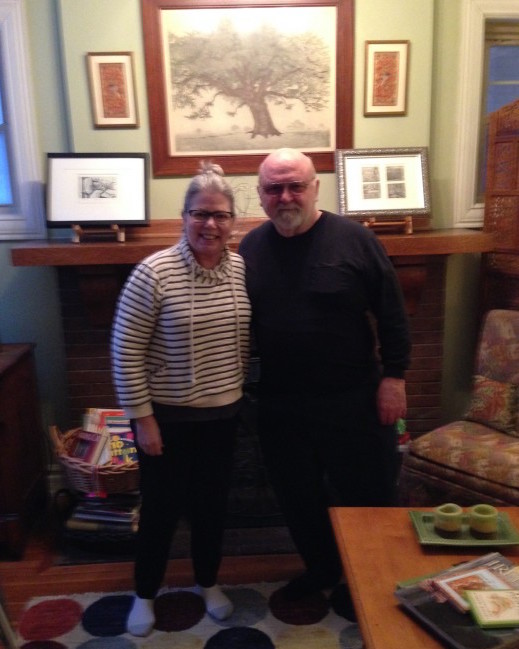
“There were a lot of that sort of people in the neighborhood, the sort of ‘ex-pats’, only they still lived in the United States, who went underground. There was every sort of element, so you had a lot of artists and musicians, you had a lot of students and professors, you had bad guys, you had pimps and whores…”
“I don’t think you had a lot of that though,” interrupts Jim Carney.
“But they were around. They were part of the neighborhood,” says Tuohey.
“Yeah, they were around,” says Carney. “But back then you could exist on a different plane. There were two societies; you wanted to go into pimps and whores, yeah, you could do that. But then you were stuck there.”
Bridget nods, acknowledging Jim’s point. She continues.
“Back then, also, the neighborhood was part of the Model Cities program, which was part of [President Lyndon] Johnson’s stuff, and there was a group called the People’s Area Development Corporation which we got involved in, and then Carney and I and some other people started the 4Cs, The Concerned Citizens of the Cass Corridor. We were very involved. At that time we really thought that we could change things, not unlike the current generation of young people who have come in to take over the neighborhood.”
“But they have a lot more money than we ever had,” interjects Carney.
“Yeah, we had similar delusions, but it was different because we were gonna keep it really cheap,” Tuohey says with a laugh. “But we worked really hard. We created the Citizens Radio Alert Patrol, we worked with the police department. We wanted to make the place as safe as possible.”
“And by and large it was,” said Carney. ” I mean, there were a couple of horrendous incidents, but in general it was petty stuff, like theft. Cars were always up for grabs. The Second Avenue Terraces? I lived there for awhile. We got broken into so many times I didn’t even bother locking the door. And after awhile it didn’t matter because they took everything so you got nothing to lose anyway.”
“And you kinda went, well, I don’t want to say this but it’s true, that was sort of the price of living in the neighborhood. You were gonna lose a radio, or you were gonna lose a TV,” said Tuohey.
“Or you were stupid because you bought a TV, but then you put the box outside,” said Carney with an incredulous expression. “It’s like leaving computer on the front seat of a car; how stupid do you have to be?”
Street smarts in Detroit. They really do come in handy. And looking back on those times, both Carney and Tuohy readily understand that things will change, and they don’t necessarily resist or resent the fact that everything is not just like it used to be. What they resent is the feeling that the newcomers seem to be getting considerable credit for ‘saving’ a neighborhood that they have lived in and loved for more than four decades and that never knew was in need of rescue. Is it being rescued from them?
“I think there is underlying resentment in the area amongst us oldsters , I guess, or certainly among people who have embraced this area because it was so weird and diverse and you could kind of claim your own stake, make your own way. There was a great deal of tolerance, for the crazy person to the professor.”
Part 1 | Part 2 | Postscript
